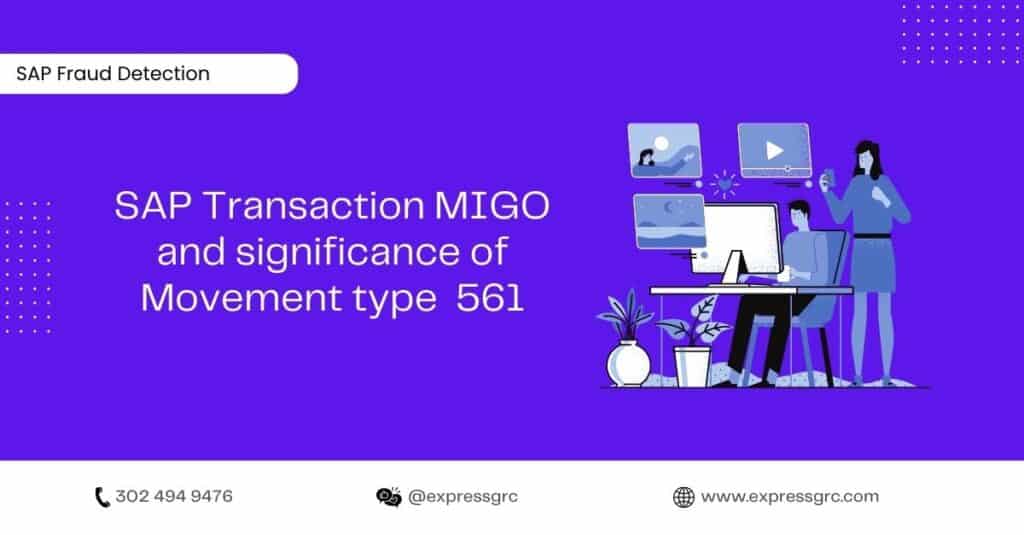In the realm of SAP auditing, understanding transaction codes and their associated movement types is paramount. SAP Transaction MIGO (Material Document Goods Movement) is a crucial part of this landscape, and movement type 561 holds a special place within it. This blog post delves into the significance of movement type 561 within SAP Transaction MIGO and outlines essential audit steps for optimal SAP management.

SAP Transaction MIGO is a critical tool used for managing goods movements within an organization. Movement type 561 specifically pertains to the transfer posting of unrestricted-use stock to blocked stock. This movement type plays a vital role in maintaining accurate inventory records and ensuring compliance with regulatory standards.
Significance of Movement Type 561:
When goods are received and need to be placed in a restricted or blocked stock area, movement type 561 is triggered. This action is essential in scenarios such as quality control assessment or when goods are awaiting further inspection. By utilizing movement type 561, companies can prevent unauthorized usage of goods that haven’t been verified for quality or compliance.
Audit Steps for Movement Type 561:
- Documentation Review: Ensure that all relevant documents, such as purchase orders, invoices, and quality assessment reports, are accurately filed and linked to the movement. This documentation provides an audit trail for the movement and justifies the use of movement type 561.
- Authorization Verification: Confirm that only authorized personnel initiate and approve movement type 561 transactions. Implement strict access controls to prevent unauthorized individuals from performing this crucial action.
- Quantity Validation: Perform regular reconciliations between unrestricted-use stock and blocked stock. Any discrepancies should be investigated promptly to prevent potential stock losses or inaccuracies.
- Reason Code Analysis: Require users to input a valid reason code when using movement type 561. This ensures that there’s a clear understanding of why goods are being transferred to blocked stock, improving transparency and accountability.
- Segregation of Duties: Implement a segregation of duties (SoD) policy to prevent a single individual from controlling the entire movement process. SoD reduces the risk of fraud and errors.
FAQs about SAP Transaction MIGO and Movement Type 561:
Q: Can movement type 561 be reversed? A: Yes, movement type 561 can be reversed using a corresponding movement type, typically movement type 562.
Q: Is movement type 561 used only for quality assessment? A: While movement type 561 is commonly used for quality assessment purposes, it can also be applied when goods need to be temporarily placed in blocked stock for other reasons.
Q: How often should reconciliations between unrestricted and blocked stock be performed? A: Reconciliations should be conducted regularly, ideally on a monthly basis, to promptly identify and address any discrepancies.
Conclusion:
In the intricate landscape of SAP auditing, mastering the significance of movement type 561 within SAP Transaction MIGO is crucial. By understanding its role and executing the outlined audit steps, organizations can ensure accurate inventory management, regulatory compliance, and a streamlined workflow. Effectively utilizing movement type 561 contributes to enhanced control over goods movements and a robust foundation for successful SAP management.
